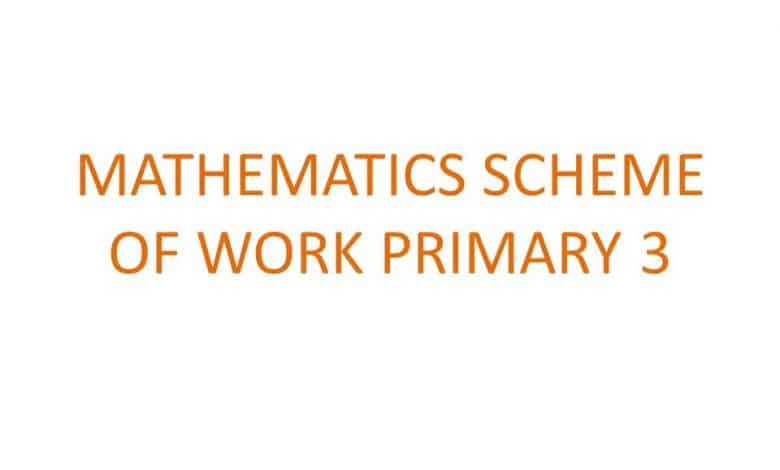Scheme of Work
Mathematics Scheme Of Work For Primary 3

This article provides you with the Mathematics scheme of work and the curriculum for the first term, second term, and third term for primary 3 pupils.
First Term
Whole number up to 999
- Correct counting of number up to 999
- Counting in groups of hundred tens and units (HTU)
- Ordering whole numbers with symbol <and >
Fractions
- Fractions (1/2 , 1/3, ¼ 1/5 1/6)
- Fractions of shapes square, circles rectangle and triangle
- Equivalent fractions
- 2. Ordering of fractions
Addition
- Addition of 2digit number with exchanging or renaming
- Addition of 3digit numbers
- Addition of 3dight numbers taking two at a time
- add fractions with the same denominator
- mention the need for correct addition of numbers and fractions in everyday activities
Subtraction
- Subtraction of 2-digit numbers with exchanging or renaming
- Subtraction of 3digit numbers
- Subtraction of 3 numbers taking two at a time
- subtract fractions with the same denominator
- mention the need for correct subtraction of numbers and fractions in everyday activities
Multiplication
- Basic multiplication from 1×1 to 9×9
- Multiplication of 2digit number by 1-digit e.g. 2 4x 4 or 23×4 =
- Multiplication of three 1-digit numbers taking two at a time
Second Term
Division
- Division of whole numbers not exceeding 48 by 2, 3, 4, 5and 6 without remainder
- Factors of whole number not exceeding 48
- find a missing factor in a given numbers
- distinguish between multiples and factors
Open Sentence
Pupils should be able to:
- find missing numbers in open sentences
- identify the relationship between – addition and subtraction, – subtraction
- solve related quantitative aptitude problems
Money
- Changing money not exceeding N20.00 into smaller units
- Shopping involving addition and subtraction with money not greater than N20
- Multiplication of money with product not exceeding N20
Length
- Measure of length widths and comparison of estimates with actual measurement using steps and hand span
- Measuring and finding the perimeter of regular figures in meters and centimeters
- Comparing nonstandard measure e.g. arms length
- Measurement in meters and centimeters
Time
Pupils should be able to:
- say time accurately in hours and minutes
Read: List of Nursery and Primary School Subjects
Third Term
Time
Pupils should be able to:
- gives dates in day and month.
- mention the importance of time in daily life activities
Weight
- Introduction of grams and kilograms as units of measurement
- Weight of some rocks and minerals
- appreciate the need for grams and kilograms as standard units of measure for transactions
- change grams to kilogram and kilograms to grams
Capacity
- Identifying liter as a unit of measuring capacity
- Measuring liquid e.g. water with graduated cylinder up to any stated number of liters
Symmetry
Pupils should be able to:
- identify shapes with lines of symmetry
- identify lines of symmetry in everyday life
- State properties of square, rectangle and triangles
- Identify that some shapes in everyday life are square, rectangular, triangular and circular and therefore see mathematics in everyday life
- distinguish between curves and straight lines
- identify the presence of straight lines and curve in real life situations
- draws square, rectangle, triangles and circles
Pictogram
Pupils should be able to:
- read and represent information in pictograms using vertical and horizontal arrangements
- represent information on a pictogram
- identify the most common features of pictogram (the mode)
- mention the usefulness of pictogram (the mode)
